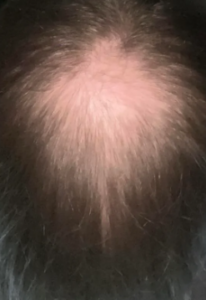Do different JAK inhibitors have different risk of causing acne?
Authors of a new study set out to review the risk of acne with JAK inhibitors. To do so, the authors performed a systematic review and meta-analysis of 25 unique phase 2 and phase 3 studies with a sample size of 10,839 subjects. Participants in these studies either received a JAK inhibitor or a control.
The results showed that acne was a side effect in 6.2% of JAK-treated patients compared to 1.3% of controls. This meant that treatment with a JAK inhibitor was associated with a 3.83 (95% CI, 2.76-5.32) fold increased risk of developing acne compared to controls.
Different JAK Inhibitors Have Different Acne Risk
Interestingly, the various JAK inhibitors had different risk for acne. JAK inhibitors with the highest odds ratios for acne development were (in order) abrocitinib, baricitinib, upadacitinib, deuruxolitinib and deucravacitinib. Specific risk via odds ratios is shown below with their confidence intervals. Abrocitinib, for example, was found to have a 13.5 fold increased risk of acne compared to controls.

